#the lays of beleriand
Text


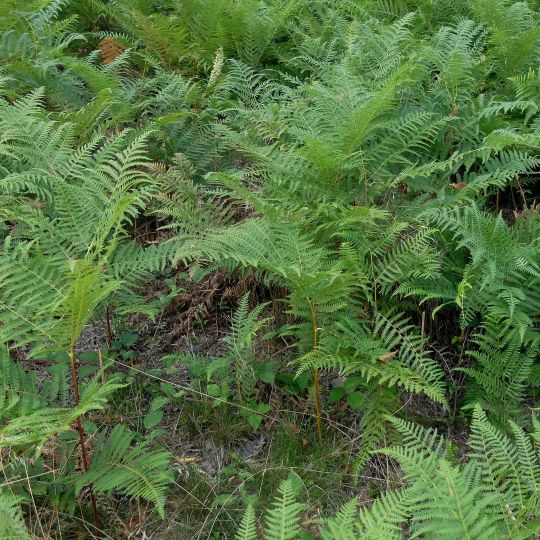
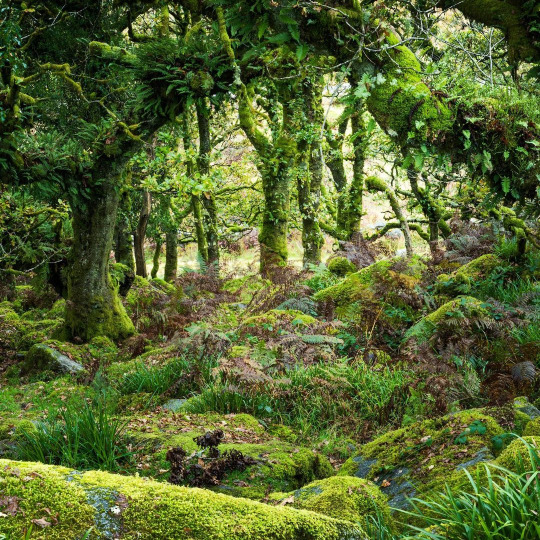

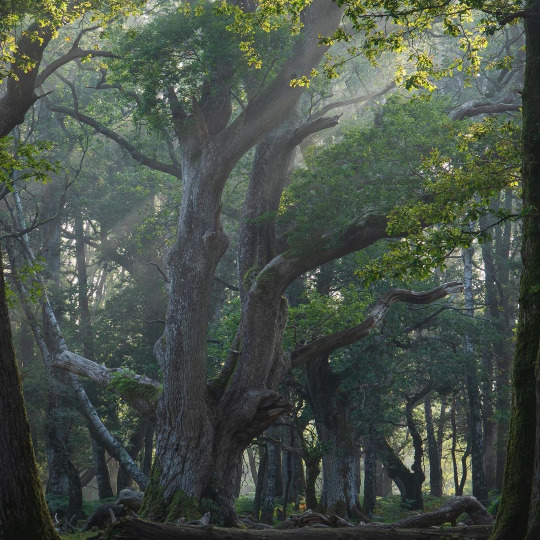

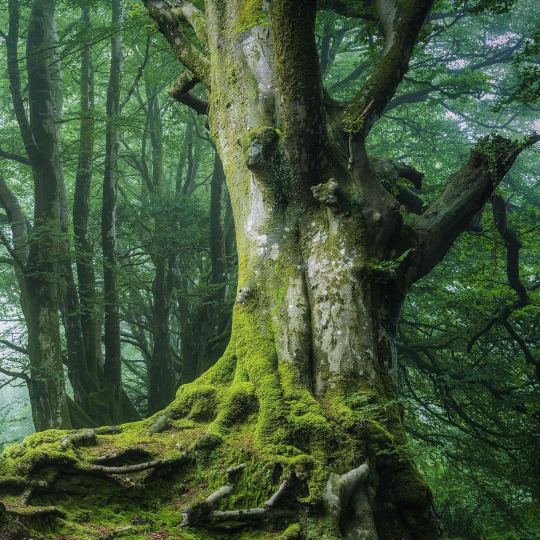

Daeron board for @searchingforserendipity25 wth cave streams, ferns and forests! Seren, you're such a kind person, I reread the tags you leave on my posts all the time and I absolutely adore your writin, especally your dusk piece and your recent Aredhel ones!
x x x x x x x
69 notes
·
View notes
Quote
With tears for Finrod weep
repentant! Swords for Morgoth keep!
No kindred blood shall here be shed.
Yet here shall neither rest nor bread
the brethren find who set at naught
Finarfin's house. Let them be sought,
unharmed to stand before me! Go!
The courtesy of Finrod show!
Orodreth sends Celegorm and Curufin from Nargothrond but commands they not be harmed, The Lay of Leithian, J.R.R. Tolkien
141 notes
·
View notes
Note
For the Choose Violence ask game: 22 for any of Tolkien's Middle Earth works? (Histories of Middle Earth included.)
Two asks for this one!
@nopewood: 22 for the ask game pleaseee ^^
22. your favorite part of canon that everyone else ignores
It's not entirely ignored, but the poetic Leithian deserves way higher profile than it has! It's absolutely magnificent as poetry and also elaborates a lot more of the events of Beren and Lúthien's Quest than the text of the Silmarillion does (for example: the spell Lúthien uses to grow her hair is incredibly complex, cool, and rather spooky).
Another part that I really like that almost everyone ignores is "The Coming of Tuor to Gondolin" in Unfinished Tales. I love the characterization that we get of Tuor during his time as a outlaw and his journey to Nevrast and thence to Gondolin - he, well 'chill' compared to the other Edain we get, but he's not entirely chill and it's really not sufficiently recognized that he waged a single-handed guerilla war in Hithlum for about three years when he was little more than a teenager.
A specific bit of that that I like and that no one else seems (understandably!) to care about is the description of the gates of Gondolin. I love it. The imagery of the different materials, colours, the structure, the designs and what they symbolize/convey. And we're also told that the Elves created a lot of magnificent things, but they're rarely described in detail, and we get such great descriptions here.
Gates!
Thus they came at length to a wide art with tall pillars upon either hand, hewn in the rock, and between hung a great portcullis of crossed wooden bars, marvellously carved and studded with nails of iron. Elemmakil touched it, and it rose silently, and they passed through.
"You have passed the First Gate, the Gate of Wood," said Elemmakil.
...Some half-league from the Wooden Gate Tuor saw that the way was barred by a great wall built across the ravine form side to side, with stout towers of stone at either hand. In the wall was a great archway above the road, but it seemed that masons has blocked it with a single mighty stone. As they drew near its dark and polished face gleamed in the light of a white lamp that hung above the midst of the arch.
"Here stands the Second Gate, the Gate of Stone," said Elemmakil; and going up to it he thrust lightly upon it. It turned upon an unseen pivot, until its edge was towards them, and the way was open upon either side; and they passed through, into a court where stood many armed guards clad in grey.
...After a little space they came to a wall yet higher and stronger than before, and in it was set the Third Gate, the Gate of Bronze: a great twofold door hung with shields and plates of bronze, wherein were wrought many figures and strange signs. Upon the wall above its lintel were three square towers, roofed and clad with copper that by some device of smith-craft were ever bright and gleamed as fire in the rays of the red lamps ranged like torches against the wall. Again silently they passed the gate, and saw in the court beyond a yet greater company of guards in mail that glowed like dull fire; and the blades of their axes were red. Of the kindred of the Sindar of Nevrast for the most part were those that held this gate. [NOTE: Another reference to the Sindar using axes as their main weapon, something that I almost never see in fic.]
....Thus at last they drew near the Fourth Gate, the Gate of Writhen Iron. High and black was the wall, and lit with no lamps. Four towers of iron stood upon it, and between the two inner towers was set an image of a great eagle wrought in iron, even the likeness of King Thorondor himself, as he would alight upon a mountain from the high airs. But as Tuor stood before the gate it seemed to his wonder that he was looking through boughs and stems of imperishable trees into a pale glade of the Moon. For a light came through the traceries of the gate, which were wrought and hammered into the shapes of trees with writhing roots and woven branches laden with leaves and flowers and as he passed through he saw how this could be; for the wall was of great thickness, and there was not one grill but three in line, so that to one who approached in the middle of the way each formed part of the device; but the light beyond was the light of day...Now they passed through the lines of the Iron Guards that stood behind the Gate; black were their mantles and their mail and long shields, and their faces were masked with vizors each bearing an eagle's beak.
What the Fourth Gate reminds me of at the moment is Menegroth - trees carved in iron, as Menegroth is trees and birds and other animals wrought in stone, the combination of the love of nature with the love of craft through the work of two different peoples. And the sequence - the different materials (wood, stone, bronze, iron), the number of towers matching the number of the gates, the guards outfitted in a way that matches the gates - really appeals to me. The connection of Gondolin both with Ulmo, who showed Turgon the location and concealed his people so they could get here, and with Manwë via Thorondor (who is really Turgon's link to the outside world, and brings him news on more than one occasion) is just fantastic.
Then we have the gates of Silver and Gold:
Tuor saw beside the way a sward of grass, where like stars bloomed the white flowers of uilos, the Evermind that knows no season and withers not; and thus in wonder and lightening of heart he was brought to the Gate of Silver.
The wall of the Fifth Gate was built of white marble, and was low and broad, and its parapet was a trellis of silver between five great globes of marble; and there stood many archers robed in white. The gate was in shape as three parts of a circle, and wrought of silver and pearl of Nevrast in likenesses of the Moon; but above the Gate upon the midmost globe stood an image of the White Tree Telperion, wrought of silver and malachite, with flowers made of great pearls of Balar. And beyond the Gate in a wide court paved with marble, green and white, stood archers in silver mail and white-crested helms, a hundred upon either hand. Then Elemmakil led Tuor and Voronwë through their silent ranks, and they entered upon a long white road, that ran straight towards the Sixth Gate; and as they went the grass-sward became wider, and among the white stars of uilos there opened many small flowers like eyes of gold.
So they came to the Golden Gate, the last of the ancient gates of Turgon that were wrought before the Nirnaeth; and it was much like the Gate of Silver, save that the wall was built of yellow marble, and the globes and parapets were of red gold; and there were six globes, and in the midst upon a golden pyramid was set an image of Laurelin, the Tree of the Sun, with flowers wrought of topaz in long clusters upon chains of gold. And the Gate itself was adorned with discs of gold, many-rayed, in likenesses of the Sun, set amid devices of garnet and topaz and yellow diamonds. In the court beyond were arrayed three hundred archers with long bows, and their mail was gilded, and tall golden plumes rose from their helmets; and their great round shields were red as flame.
As I reread this...I had thought before of Gondolin, the image of Tirion in Valinor, being a symbol/indication of Turgon's inability to let go of his homesickness, and the images of the Trees being connected to that. But it doesn't feel like that now - it feels like a fusion, of the past in Valinor (the two Trees) and present in Beleriand (the Moon and Sun, and also the pearls of Nevrast and Balar; the latter indicate that Turgon must also have had a close relationship with Cirdan and the Falathrim) - and by the way, how did Turgon realize the connection between the Trees and the moon and sun, when as far as the Noldor know the Trees were entirely dead? It's an impressive connection to work out by himself.
These gates - and their matching flowers, which is an amazing touch - are more decorative and less military than the others, as though, having passed the gate of iron, the focus is now more on beauty rather than defence. And then we're slapped in the face with this:
The way was short to the Seven Gate, named the Great, the Gate of Steel that Maeglin wrought after the return from the Nirnaeth, across the wide entrance to the Orfalch Echor. No wall stood there, but on either hand were two round towers of great height, many-windowed, tapering in seven storeys to a turret of bright steel, and between the towers there stood a mighty fence of steel that rusted not, but glittered cold and white. Seven great pillars of steel there were, tall with the height and girth of strong young trees, but ending in a bitter spike that rose to the sharpness of a needle; and between the pillars were seven cross-bars of steel, and in each space seven times seven rods of steel upright, with heads like the broad blades of spears. But in the centre, upon the midmost pillar and the greatest, was raised a mighty image of the king-helm of Turgon, the Crown of the Hidden Kingdom, set about with diamonds.
This is grim and forbidding and hostile after the Gates of Silver and Gold - like passing from an intricately carved gate of a garden to a fence of razor wire. It's the only gate that Elemmakil can't open for them, and there's no elegant way to knock - you just have to bang on the bars. The pillars of steel might be the size of young trees, but they aren't carved to look like trees or anything else - they're just spikes. The other gates had images of nature, and sometimes of the world outside; this gate is hostile to the world outside.
And, after the three previous gates with Thorondor followed by the images of the creations of Valar - the Trees and the Moon and Sun - we have an image of Turgon's crown on this one.
This is a very clear warning to the reader - something is wrong in Gondolin. Turgon has grown proud and shut out the outside world, and is putting himself and his desires as of the foremost importance. This Gate tells us what Turgon's answer to Tuor's message from Ulmo will be even before Tuor delivers us. And the statement that Maeglin made this gate shows him symbolically as an influence upon this change of attitude in Turgon. Everything about this gate foreshadows the fall of Gondolin.
Thank you for indulging me on this super long post! Look, I just really enjoy imagery and patterns!
#tolkien#the silmarillion#unfinished tales#gondolin#the fall of gondolin#turgon#the lays of beleriand#history of middle-earth#beren and luthien#ask game
30 notes
·
View notes
Text
And thus in anguish Beren paid
for that great doom upon him laid,
the deathless love of Lúthien,
too fair for love of mortal Men;
and in his doom was Lúthien snared,
the deathless in his dying shared;
and Fate them forged a binding chain
of living love and mortal pain.
— The Lays of Beleriand, "The Doom of Lúthien"
J.R.R. Tolkien
#The Lays of Beleriand#The Doom of Luthien#Luthien#Beren#beren and luthien#luthien tinuviel#Daughter of Flowers#Beren Erchamion#love#mortality#lord of the rings#lotr#j.r.r. tolkien#tolkien#poem#source embedded#random
8 notes
·
View notes
Text
Túrin Thalion—
a burden bore he than their bonds heavier,
in despair fettered with spirit empty
in mourning hopeless he remained behind.
- The Lays of Beleriand by JRR Tolkien
(Turin after he slew Beleg.)
#jrr tolkien#turin turambar#beleg strongbow#beleg#death of beleg#the lays of beleriand#this moment#when Turin accidentally kills Beleg is just so sad
22 notes
·
View notes
Text
“There he called longing: / ‘O Beleg, my brother, O Beleg, tell me / where is buried thy body in these bitter regions?’ - / and the echoes always him answered ‘Beleg’; / yet a veiled voice vague and distant / he caught that called like a cry at night / o’er the sea’s silence: ‘Seek no longer. / My bow is rotten in the barrow ruinous; / my grove is burned by grim lightning; / here dread dwelleth, none dare profane / this angry earth, Orc nor goblin; / none gain the gate of the gloomy forest / by this perilous path; pass they may not, / yet my life has winged to the long waiting / in the halls of the Moon o’er the hills of the sea / Courage be thy comfort, comrade lonely!’” (1683-1698, The Lays of Beleriand. Not all formatting carried over, bold is my own).
shaking, screaming, sobbing, etc.
#sometimes the history of middle earth hits ngl#children of hurin#beleg#turin#ok but as i was continuing to read i was like 'what if ulmo/ylmir allowed beleg to speak to turin one last time?' cause i was thinking of#the last coh post i made. and then this happened and i feel like it lowkey implies that ylmir/ulmo is responsible for the message getting to#turin and it's just AHHHHH#sorry but my bow is rotten my grove burned will just stick with me.#c.talk#the lays of beleriand
122 notes
·
View notes
Text
#The Dark Feather#Anna Stephens#The Sunlit Man#Brandon Sanderson#The Heart of the World#Amie Kaufman#The History of Middle-earth#The Lays of Beleriand#The Shaping of Middle-earth#The Lost Road#Christopher Tolkien#J. R. R. Tolkien#J.R.R. Tolkien#JRR Tolkien#Tolkien
1 note
·
View note
Text
Preview- The History of Middle-Earth (Boxed Set 2): The Lays of Beleriand, The Shaping of Middle-Earth & The Lost Road
Second in a series of hardback boxed sets celebrating the literary achievement of Christopher Tolkien, featuring double-sided dustjackets. Includes THE LAYS OF BELERIAND, THE SHAPING OF MIDDLE-EARTH and THE LOST ROAD, which contain the early myths and legends that led to the writings of THE SILMARILLION.
The Lays of Beleriand gives us a privileged insight into the creation of the mythology of…

View On WordPress
#J.R.R. Tolkien.#Middle-Earth#The History of Middle-earth#The Lays of Beleriand#The Lost Road#The Shaping of Middle-Earth
0 notes
Text

Read of The Lays of Beleriand by J. R. R. Tolkien (1985) (435pgs)
0 notes
Text
I'm not sure if this has been talked about before, but I'm gonna talk about it regardless because it has completely blown my mind. I first discovered it on a reddit post, which you can read here.
In the book The History of the Hobbit, John Rateliff suggests that the Wilderlands of The Hobbit is actually the Beleriand of Tolkien's early mythology as it was written during the 1930's, only taking place ages after the War of the Jewels, since the later ages and maps of middleearth hadn't been created by Tolkien yet. Keep in mind that at this point in Tolkien's writings, the breaking of Thangorodrim was nowhere near as bad as it would later turn out to be. Beleriand never sank into the sea, but it was still drastically changed.
Here are two maps drawn by Tolkien during the 1930's, one of Beleriand and the other of the Wilderlands found in the Hobbit:
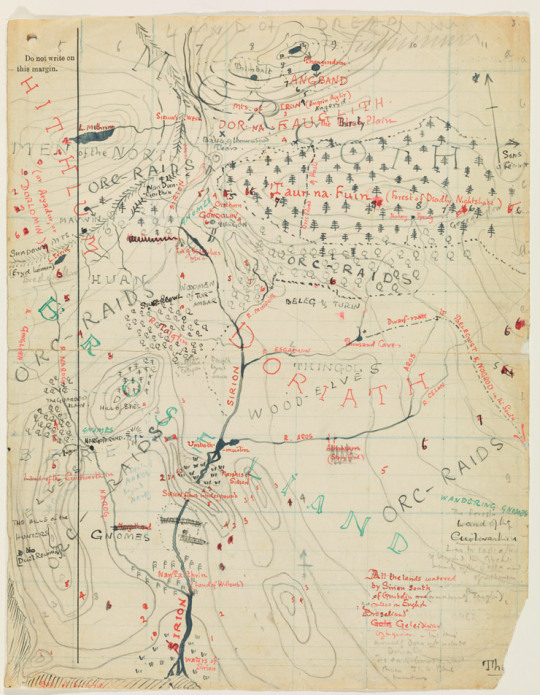

In terms of similarities, one of the first things I noticed(and one of the most obvious) was the river Sirion and the Great River of the Wilderlands. The name Sirion literally translates to 'Great River'.
In the middle of the path of said river is the Carrock, which is where the Eagles set Bilbo and Company down after saving them, and the way it is described in the Hobbit reminds me a lot of this illustration Tolkien made of Tol-Sirion:
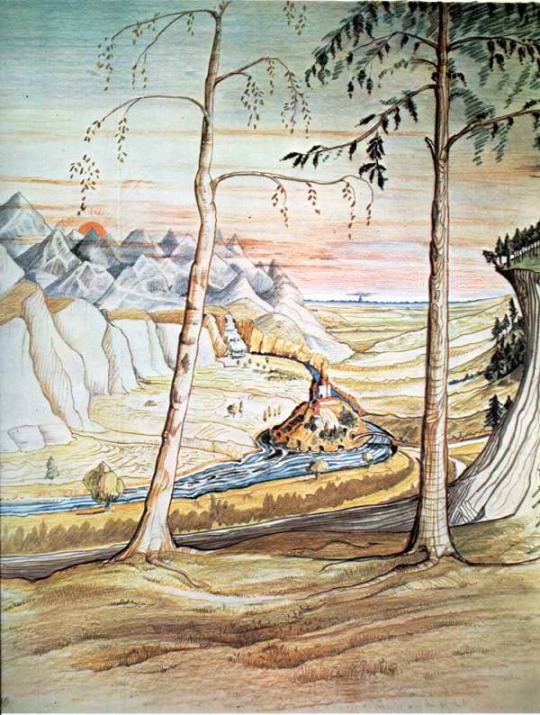
"But cropping out of the ground, right in the path of the stream which looped itself about it, was a great rock, almost a hill of stone, like a last outpost of the distant mountains, or a huge piece cast miles into the plain by some giant among giants."
-The Hobbit, Queer Lodgings.
AND it is also uses very similar wording to how the Lay of Leithian describes Tol-Sirion(Tolkien was working on the Leithian around the same time he was writing The Hobbit):
'An isled hill there stood alone/ amid the valley, like a stone/rolled from the distant mountains vast/when giants in tumult hurtled past'
-Lay of Leithian.
There's also the mention of "a little cave, (a wholesome one with a pebbly floor) at the foot of the steps" which the person in the reddit post suggests could be the remains of the very same dungeon where Finrod, Beren, and their companions were imprisoned by Sauron after their disguises were stripped away. The same place where all but one of them were slowly devoured one by one. The same place where Finrod died.
Above it at the top of the Carrock would be where Finrod was buried, and the "Ford of huge flat stones [that] led to the grass-land beyond the stream" could be the remains of the broken bridge that was destroyed by Luthien: "the hill trembled; the citadel/crumbled and all its towers fell/the rocks yawned and the bridge broke/and Sirion spurned in sudden smoke."
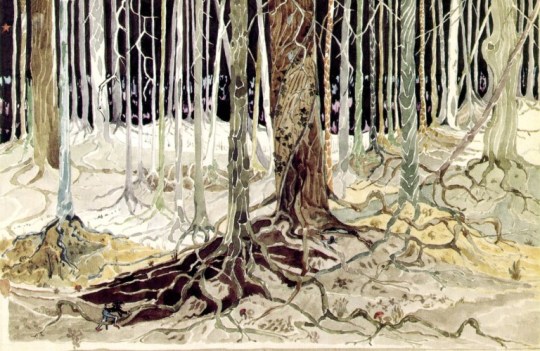
The "two Mirkwoods" is also a big one. I always found it odd that there were two completely different forests sharing the same name, but at the time Tolkien wrote it, they weren't seperate at all, but the exact same forest, just changed and grown over thousands of years in between the events of the Silmarillion and The Hobbit. The same forest that Sauron fled to after the fall of Tol-in-Guarhoth. The same one Beleg found Gwindor in after his escape from Angband.
If they really were intended to be the same forest at the time Tolkien wrote it, it also answers the question I had earlier regarding this part in the Leithian when Sauron flees Tol-in-Guarhoth:

A new stronghold? We never hear anything about this in the Silmarillion, of Sauron building a new stronghold in Taur-nu-fuin, and it puzzled me when I first read it. But that's when I realized that this "new throne and darker stronghold" was talking about none other than the fortress of Dol Guldur itself, Sauron's stronghold within Mirkwood.
(Not lying, I was pretty proud of myself for figuring that one out)
Oh, and the Lonely Mountain? While it doesnt appear on the 1930's Beleriand map, it would likely be Maedhros's fortress of Himring itself, or at least the mountain it was built on top of, as Himring is located east of Taur-nu-fuin just about in the same place where Erebor is located. Just the thought of the Dwarves' home being within the very mountain that once had Maedhros's citadel atop it has my brain going wild. (Oh, and the fact that the arkenstone was found within the ancient hills of what was once Himring, fortress of the elf lord who threw himself into a fiery chasm with a silmaril? Coincidence? I think NOT)
There are plenty of other similar locations between the two maps, and judging by them both Eriador would be Hithlum/Aryador, with the Misty Mountains being the Mountains of Shadow. The Withered Heath would be the Anfauglith, the Eagle Eyrie would be the Crissaegrim, and the Iron Hills are what's left of Nogrod and Belegost. I've even heard that Mavwin/Morwen's house could be the roots of Rivendell.
Overall, it's so, so cool and it has my mind running wild. It really makes me see The Hobbit in a whole new light. We all talk about the amazing stories that came out of the Hobbit aka Lord of the Rings, but seeing where the stories of the Hobbit came from just adds a whole other level of depth to it all. This is why I love Tolkien's works so much. It's all so incredibly deep and rich and it just gets better and richer the deeper you go, and there's so much of it. It's one of those things that you just rarely get tired of, and even if you do, you're bound to come back to it later and I love it.
#Tolkien#Silmarillion#Hobbit#Lay of Leithian#Beleriand#Wilderlands#Lotr#Erebor#Taur-nu-fuin#Mirkwood#Lonely Mountain#Sirion#Finrod#Beren#Luthien#Maedhros#Sauron#Tol-Sirion#Tol-in-Guarhoth
377 notes
·
View notes
Photo
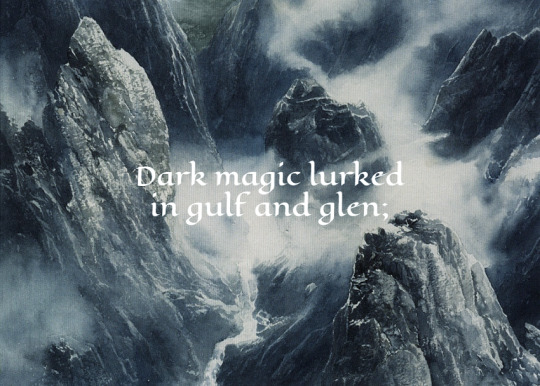
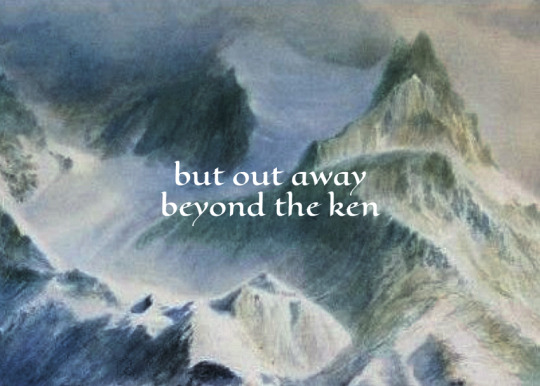



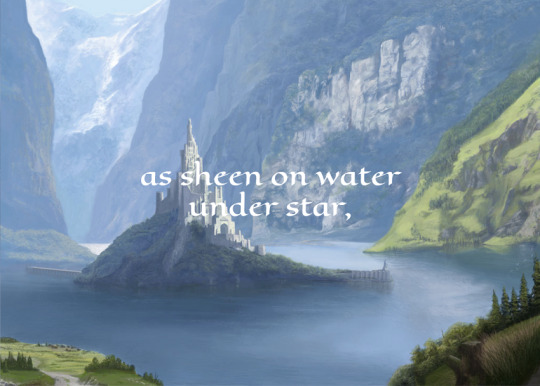


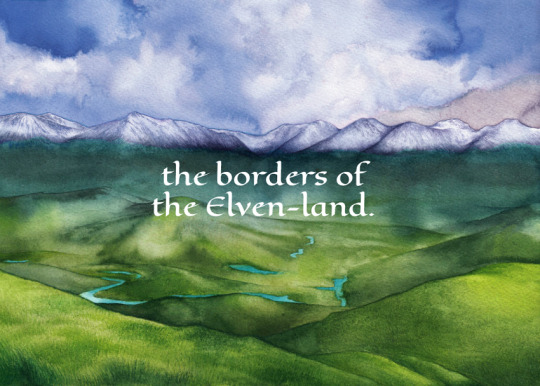
— The Lay of Leithian
Paintings by Alan Lee, John Howe, Stefan Meisl, Ted Nasmith, and Sarka Skorpikova
#lotredit#tolkienedit#silmedit#silmarillion#Lays of Beleriand#my edits#I am once again asking you to read the Lays of Beleriand IT IS SO GOOD
2K notes
·
View notes
Note
Could you expand on what Morgoth said about the Valar having harems in Aman??? I’ve never heard that before and whether he’s lying or not that’s wild. Like, was it just something he causally dropped in a generally menacing speech or what, I’m trying to figure out in what context he would even bring that up!
Yeah no problem!
I was half joking about him saying there were harems in Valinor but well, he certainly talks about elves being used by the gods for similar purposes.
Warning: this passage contains sexual harassment and implicit threats of sexual violence. The language is flowery but it’s still in my opinion one of the more disturbing passages from Tolkien, in this regard at least.
From The Lay of Leithan
Of what avail here dost thou deem thy babbling song and foolish laughter? minstrels strong are at my call. Yet I will give it a respite brief, a while to live, alittle while though purchase dear, to Lúthien the fair and clear, a pretty toy for idle hour
In slothful gardens many a flower like thee the amorous gods are used, honey sweet to kiss, and cast then bruised, their fragrance loosing under feet, but here we seldom find such sweet amid our labours long and hard, from godlike idleness debarred
This goes on like this for another few lines before Lúthien interrupts
It’s worth noting that this is not the first time that he makes references to the idle lazy and indulgent atmosphere of Valinor, in Tolkien’s earlier texts. In the Book of Lost Tales part one Morgoth similarly speaks directly to the Valar through their herald, complaining of the brutal labor he must undergo which they are interrupting, accusing them similarly of laziness and decadence.
So yeah something he casually drops in a genuinely menacing speech more or less sums it up in my opinion.
I think he’s probably wrong but I’m actually undecided if he believes himself lying. I could see him truly believing the other Valar partake in this and that he has been cast out from this privilege, or that the other Valar truly treat the elves as he does but are better at papering it over in pretty settings.
On the other hand he could very easily be deliberately painting a cruel and wicked portrait of Valinor and the gods to Lúthien on purpose, he taunts her for being naive earlier in this scene, I can definitely see him spinning this story purely out of malice.

#the silmarillion#the lays of beleriand#morgoth#melkor#Lúthien#in the iron hell#musing and meta#cw abuse#the hidden hours
79 notes
·
View notes
Quote
At Luthien's feet there day by day
and at night beside her couch would stay
Huan the hound of Nargothrond;
and words she spoke to him soft and fond...
Nought said Huan; but Curufin
thereafter never near might win
to Luthien, nor touch that maid,
but shrank from Huan's fangs afraid.
Huan befriends and defends Luthien, The Lay of Leithian, J.R.R. Tolkien
66 notes
·
View notes
Text
<- experiencing shrimp emotions (listening to the return of the king ost: battle of the pelennor fields)
#rimi talks#the violin solo does things to me man...#you ever think abt that one throwaway line in yj98 that confirms kon's into lotr#they did that for me specifically.#i know in my heart that while he's primarily in wendy fandom...#kon has definitely written star wars. star trek. and silmarillion fanfic#he's one of those guys making scifi aus about the silm. girdle of melian as a cloaking device. thangorodrim black hole something something.#god fuck i want to watch/read lotr again. and the silm. and home. aakjshguarhgh#wheres my copy of the lays of beleriand i NEED to reread...#<- i experience this literally every time i listen to the lotr ost#lord the horn section before the violin solo. WAILS into my hands
29 notes
·
View notes
Text
"But Finrod walks with Finarfin his father beneath the trees in Eldamar"
I think it's no surprise to my followers who pay attention to my silm posting that I love Finrod Felagund's character, but this is the line that sticks with me heavily. Within the Quenta Silmarillion, it is told that all of those Ñoldor caught within the Doom of Mandos and of the Silmarils will "yearn for [their] bodies, and find little pity", which is often taken to mean that none of those who left Valinor would be granted the possibility of returning to physical form, to live in the bliss of Aman (though arguments can clearly be made that only those who participated in the kinslaying were under such a doom, but I choose to ignore that). That's what makes this line so much more impactful to me, along with a more important facet; it's placement in the chapter.
Just 2 pages earlier, at his death, Finrod says it will be long before he is seen again amongst his people, perhaps believing he will not be granted a bodily form until such a time as the rest of the Ñoldor would be. He dies in the darkness of his corrupted tower, and is mourned at length by Beren until Lúthien his love arrives and rouses him, and together their hope is kindled again as the sun rises (a very common theme in Tolkien's works). They honour and bury Finrod atop the island, a tomb to be unchanged until the War of Wrath caused upheaval in all of Beleriand
It's here that this line comes in. His tomb is inviolate until all the land is, but he himself walks with his father, the only of Finwë's sons to remain in Valinor, and that says so many things.
He is one of few, or perhaps the only, Ñoldorin exile to be gifted bodily rebirth. He surpassed the Doom of Mandos (see my 2nd link in paragraph 1)
His father welcomes him home and forgives his leaving
No matter the state of his grave, Felagund is himself unmarred
No timeline is given for Finrod's bodily resurrection, but I choose to believe it is before the end of the First Age (and the fandom wiki agrees, tolkien gateway being more vague), for no other reason than Eärendil. It is because of Finrod, his assistance of and sacrifice for Beren, that the man of Bëor lives long enough to be united with Lúthien in the Quest, and they, along with Huan, are able to retrieve the Silmaril that Eärendil brings to Aman. I consider that Finrod is likely unaware of the success of the Quest, given it seems the rest of Valinor was (or at least they waited for a plea from Middle-Earth before acting on anything). Imagine his wonder, his pride, and his joy, at seeing that not only was the quest successful, but here, 80 years after he died, he sees Beren and Lúthien's grandson-in-law bearing the jewel. I wonder what he would have said to Amarië his love, if he would have remarked in joyous tears that the horrors and the death that led him back into Aman were not faced in vain. I wonder if, taking up his weapon to participate in the War of Wrath, he either sat a moment in sorrow, or in hope, or in some other emotion, considering what lay ahead of him, and as he came home afterwards with many of his kinsfolk, what he felt as he came to the bliss that would last until the changing of the world.
No matter his feelings on the Wars, what his experiences are and what he goes through after his resurrection, we know this:
Finrod walks with Finarfin his father beneath the trees of Eldamar
#silmarillion#tolkien#finrod felagund#finrod#findarato#findaráto#beren erchamion#beren#luthien tinuviel#luthien#lúthien#finarfin#eärendil#earendil#amarië#one day I will own the lays of beleriand and be even further enamoured with his tale
49 notes
·
View notes
Text
...and tales of Túrin were told in his halls
and how Beleg the ageless was brother-in-arms
to the black-haired boy from the beaten people.
The Lays of Beleriand by JRR Tolkien
#jrr tolkien#the lays of beleriand#some lines just grab me#beleg cuthalion#turin turambar#brothers in arms
17 notes
·
View notes